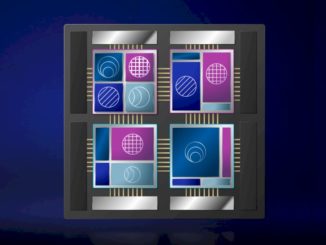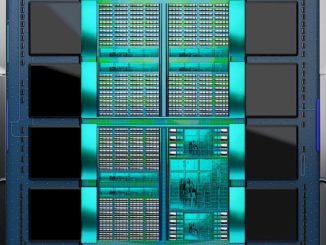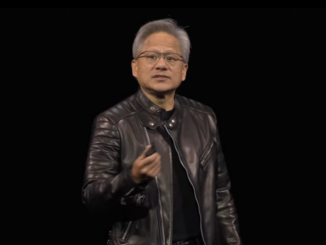
Much of the business that Cisco Systems and others have been doing in the AI infrastructure field since OpenAI lit the generative AI fuse with ChatGPT in November 2022 has been deploying hardware and software with the hyperscalers, a lucrative business that led company executives to promise to sell as much as $1 billion in back-end network technology by the end of its fiscal year and then to blow past that a quarter early.
The push to work with the hyperscalers and cloud builders made sense, given that that was where much of the AI workloads were going at the time. It also established Cisco as a serious AI infrastructure company, according to Kevin Wollenweber, senior vice president and general manager of datacenter, Internet, and cloud infrastructure at the company.
“I don’t think the market really understood that we were a player in that high-end hyperscale space with our Silicon One technologies and with our optics and optical technologies,” Wollenweber told The Next Platform during this week’s Cisco Live 2025 show in San Diego, California, adding that the AI-related revenue numbers helped prove otherwise. “That was really just to get the market to understand we are playing in this hyperscale space.”
However, the AI picture continues to reshape, with AI models evolving, a rising emphasis on inferencing in the datacenter, the rise of AI agents, and growing enterprise adoption of AI and the related demand for on-premises capabilities. Infrastructure players are responding with tools and services to address that demand. At Dell Technologies World last month, founder and chief executive offer Michael Dell told attendees the company was “taking all the learnings from these massive AI systems to make AI easy for you, from AI PCs to small, domain-specific models running on the edge to the planetary-scale AI datacenters.” Nvidia co-founder and chief executive officer Jensen Huang in a taped interview with Dell said his company is “teeing up for one of the largest opportunities ahead of us, which is enterprise AI.”
Simplifying AI Infrastructure For The Enterprise
During this week’s event, Cisco executives touted the central role the network plays in AI in connecting various aspects, the push to bring AI into private datacenters, and the need for security, resilience, and trust in AI, with Jeetu Patel, president and chief product officer at Cisco, noting that “for the very first time, security is becoming an accelerant to adoption rather than becoming an impediment. In the past, what would happen is you would always make this trade-off between security: do you want to be secure or do you want to be productive? Now I think that security is a prerequisite for productivity. It’s a prerequisite for AI adoption. Without safety and security, you don’t trust the system. If you don’t trust the system, you’re not going to use it.”
The expansive announcements Patel, chief executive officer Chuck Robbins, and other executives rolled out at Cisco Live touched on all of these aspects. In the datacenter, Cisco converged ACI and NX-OS, creating a single spot for LAN, SAN, IPFM (IP Fabric for Media), and AI and machine learning fabrics that will appear in the Nexus Dashboard next month, merged the management of Meraki and Catalyst devices and support for wireless, switching, routing, and industrial networks into a single platform, and introduced an integration of ThousandEyes performance analysis software and Splunk for more visibility into networks and .
Cisco’s Deep Network Model, a networks-specific large language model (LLM) trained on Cisco expertise, is the foundation for its AgenticOps approach for running IT operations in the AI era. That now includes AI Canvas, a GenAI user interface for dashboards aimed streamlining collaboration between NetOps, SecOps, and DevOps teams.
Cisco is also expanding its AI push outside of the datacenter, with new smart switches for campuses, secure routers for branch operations, and hardware for wireless and industrial environments.
A Tighter Embrace With Nvidia
Cisco has expanded and deepened its integration with Nvidia, including through configurable additions to its family of AI PODs purpose-built infrastructures, putting Nvidia’s RTX Pro 6000 Blackwell Server Edition GPU into its UCS C845A M8 AI rack servers, and including its AI Defense and Hypershield security features in Nvidia’s Enterprise AI Factory validated design to protect AI agents in open models that are optimized with Nvidia’s NIM and NeMo microservices.
Cisco AI Defense and Cisco Hypershield provide visibility, validation and runtime protection of the end-to-end enterprise AI workflow, and are now included in the NVIDIA Enterprise AI Factory validated design.
Such offerings from Cisco and Dell – and certainly more to come from the likes of Hewlett Packard Enterprise – illustrate the rapid effect AI is having in how enterprise datacenters are being built and equipped. Hyperscalers will use chips and systems from an array of vendors and put them together in their environments, Cisco’s Wollenweber said.
Neoclouds And Sovereign AI
It will be different with enterprises. Some of that can be seen with the growth in neoclouds, which provide high performance GPU compute – think CoreWeave and Lambda AI – and more recently, in sovereign AI datacenters, which will provide the necessary compute, networking, and storage for inferencing-as-a-service but in specific regions. Cisco was part of the announcements last month in Saudi Arabia – around the multi-billion-dollar development of the Humain datacenter – and a partnership with AI company G42 in the United Arab Emirates to build facilities. In addition, Cisco is part of the Stargate UAE consortium to provide network, security, and observability tools for AI compute clusters in the Middle Eastern country.
Cisco also is joining BlackRock and Microsoft’s $30 billion fund to build more AI computing infrastructure.
Efforts around sovereign AI datacenters are well-funded and investing heavily in GPUs and AI technologies, he said, “but they’re built more like enterprises.”
“They’re going to focus on standardized architectures, blueprints that the companies like Cisco deliver to them, and then also the engagement with services – design, development, deploy type of resources from companies like Cisco,” Wollenweber said. “That’s where we’ll start to see the initial parts of these large AI build-outs. Then with a lot of those technology stacks – things like AI Pods today – what we’re trying to do is build simpler units that can be consumed in an easier way by a lot these companies.”
The idea behind the sovereign datacenters is to let the data remain within the confines of a country or region for security and compliance reasons, and gives enterprises that don’t want to or can’t afford to build their own AI capacity a place to run their workloads.
Managing The Cost And Innovation
Enterprises will adopt infrastructure for AI, but right now that cost and the rapid pace of innovation are too high. They aren’t built to consume new technologies – like new GPUs – every twelve months. Eventually, cost competitiveness will drive the cost-per-token down and the technology will mature and slow down the refresh cycles, Wollenweber said.
“If you’re a hyperscaler and you’re going to deploy over the next twelve months and then you are just going to buy the next twelve months and you are going to continue to deploy at that pace, it makes sense,” he said. “If you are an enterprise and you deploy and you want to sweat assets for five years, you have got to wait until we reach some sort of equilibrium in terms of the cost complexity and innovation cycles of GPUs.”
The programmable nature of Cisco’s Silicon One switching chip removes some of that burden by being able to adapt to use case changes without having tape out new chips, Patel told journalists and analysts.
The maturity of AI already is happening, Wollenweber said. After two years, many models have been trained and are being used. Foundation models have become extremely useful, so many enterprises don’t have to build their own – instead they can fine tune what’s available with their own data – and they can build smaller language models.
“The pivot that we’re seeing now and this rapid growth you’re seeing of agents and stuff like that is around inference becoming much more widely accessible and much lower cost, which makes it cost-effective and the ROI is actually there to start to drive [adoption],” he said.
Like other infrastructure vendors, Cisco initially had to figure out how to put its technologies in front of the hyperscalers, because that is where the spend was. Synergy Research Group said global cloud infrastructure spending in 2024 was $330 billion, a $60 billion year-over-year jump and $102 billion more than in 2022, with generative AI driving half of that market growth.
“The next pivot is figuring out how we take this complex architecture that we needed to go and build and simplify it for our enterprises as they look to roll this out,” Wollenweber said, pointing to AI PODs and HyperFabric fabric-as-a-service offering for datacenters as examples. “Now we’re starting to look at tying in security so that as these customers do start to play with this, or even roll it out in volume, they can do it with the idea of being safe, secure and having that visibility of what AI applications are being used in their infrastructure.”








Be the first to comment